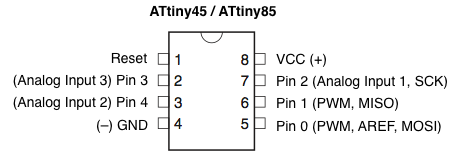The CA already has a feature where you can set a specific time to monitor you holding the throttle in the same position, and then start cruise then you let go of throttle. Not a useful feature for city traffic that I'm in, so i don't use it, but it's already there, so if you're using the torque-startup-from-stop TidBit to make a CA do that function, then you're already using a CA that has this feature.LewTwo said:While you are considering design features, consider a optional button for throttle 'cruise control'
Anyone is welcome to toss in code to make this possible in any of the TidBits that output a throttle signal (there shouldnt' be any other hardware needed beyond a button input on a digital input, and debounce hardware or code). I don't think I'll be writing a fucntion that does that myself, though.
If you really want that feature without a CA and the controller doesn't have it, then sometimes one can find the old Crystalyte Cruise Control modules, which not only have CC but +/- buttons to increase or decrease the cruise speed:
It just goes between the throttle and the controller, and basically "samples and holds" the throttle voltage present on the input when engaged, then can inc/dec it via the buttons. I think it uses the ebrake to cancel (can't remember if it also works via button or throttle movement). There's a bunch of threads about it over the years (most pretty old). I have one around here somewhere you can have if I ever find it.
https://www.google.com/search?q=Crystalyte+Cruise+Control+modules:+site:endless-sphere.com&newwindow=1&hl=en
https://www.google.com/search?q=Crystalyte+Cruise+Control+modules:&newwindow=1&tbm=isch
It's still listed on their pages
http://www.crystalyte.com/Crystalyte%20motor%20related%20part.htm
but I cant' find a link to buy anything there. This site
http://www.electric-bikes.com/betterbikes/throttles.html
has it for $30.
The Nano's supply is plenty for the Nano itself and probably for the other stuff to be used with it.Regards to powering the Nano:
It sounds as if the Nano's on board 5 volt regulator (5-12 volt DC input) would provide sufficient power.
If that be the case considering separating it into to projects: one for the nano and one for the power supply
However, the Nano requires conversion from the battery voltage (or lighting power voltage) both of which are higher than it can take as input, so that's why I'm trying to wokr out the LVPS for it.
There *will* be a pcb option for the I/O, etc., parts to go onto the headers, and the lVPS would also be on that, if someone chooses to use it. I just want to make an option for the stepdown that is very very simple to use / build and can literlaly just be tacked onto the headers for super-minimalist TidBits.
If anyone wants to design a completely separate PCB / module for the LVPS with stuff like the regulator chip Thorlancaster posted, they are definitely welcome to post it here (eventually I'll figure out how to use Github so it can also all go there, but first I have to get past pseudocode so there will be something to put on GH). Even if I can't build it, I'm sure others can, and so they can use it where I can't.
Unless the supply they have is no more than 12.0v then AFAICT it can't be used to power the Nano directly, it has to be stepped down first. Mine is 16.4 fully charged (4s NMC), and anyone else using a battery for "12v" lighting will also be higher than 12v at full charge. (3s "li-ion" would be 12.6v typical, lead-acid would be 13.6v+, etc).You indicated you already have a secondary voltage source for lighting you could use. Many others are likely in the same boat.
Yes...but I would like something that can be built into a tiny pcb to mount to the edge headers of the nano, or be directly wired to that edge header.Or they could use one of the previously listed Step-Down sources.
Or they could build the power supply project.
More choices = flexibility :wink:
Others can alwyas choose to use something different, but if a solution is already provided, it might be that more will want to use these TidBits. (I know that if I have to come up with this bit and that bit and this other bit to use something, i'm a lot less likely to get around to doing all that, than I am to just use something already there, or easy to put the parts together for--I'm sure I'm not the only one).
I must sound terribly obstinate, but I suspect that readers might be skipping some of what's posted (I type a lot


